The term vedutismo refers to the pictorial genre that arose in the 18th century and was dedicated to the faithful filming of landscapes and urban views. Vedutism experienced great success in Venice during the 18th century: the reasons for this success are to be found above all in the custom of the Grand Tour: this term was used to indicate the journey made by the young scions of the European nobility to discover the continent, often with the guidance of a tutor, and which had Italy as its favorite destination(read here the review of the great exhibition on the Grand Tour in Milan from 2021-2022). Those who went on the Grand Tour were eager to take a souvenir of their experience back home with them: and often the choices fell either on portraits, such as those “invented” by Pompeo Batoni, in which the subject was depicted against the background of ancient ruins, on glimpses of Italian cities, or on views of cities (and the term vedutismo in fact derives from the word “view”). The fact that vedutismo found fertile ground in Venice can be explained by the fact that the city was one of the most popular in Italy by these wealthy patrons, who also became responsible for the dissemination of these works at home: there were many patrons, again mainly English, who requested works from abroad from the leading Italian artists of the time.
Vedutism also found its presuppositions in the Enlightenment philosophy, which aimed to investigate reality as objectively as possible: in fact, Vedutist painting responded perfectly to the principles of this way of thinking, precisely because the views were a faithful mirror of what the painters saw before them. The Grand Tour habit itself spread thanks to the Enlightenment philosophy: the purpose of travel was indeed to know. However, Vedutism was not a genre that was born in the 18th century (although it knew its greatest spread in the 18th century).
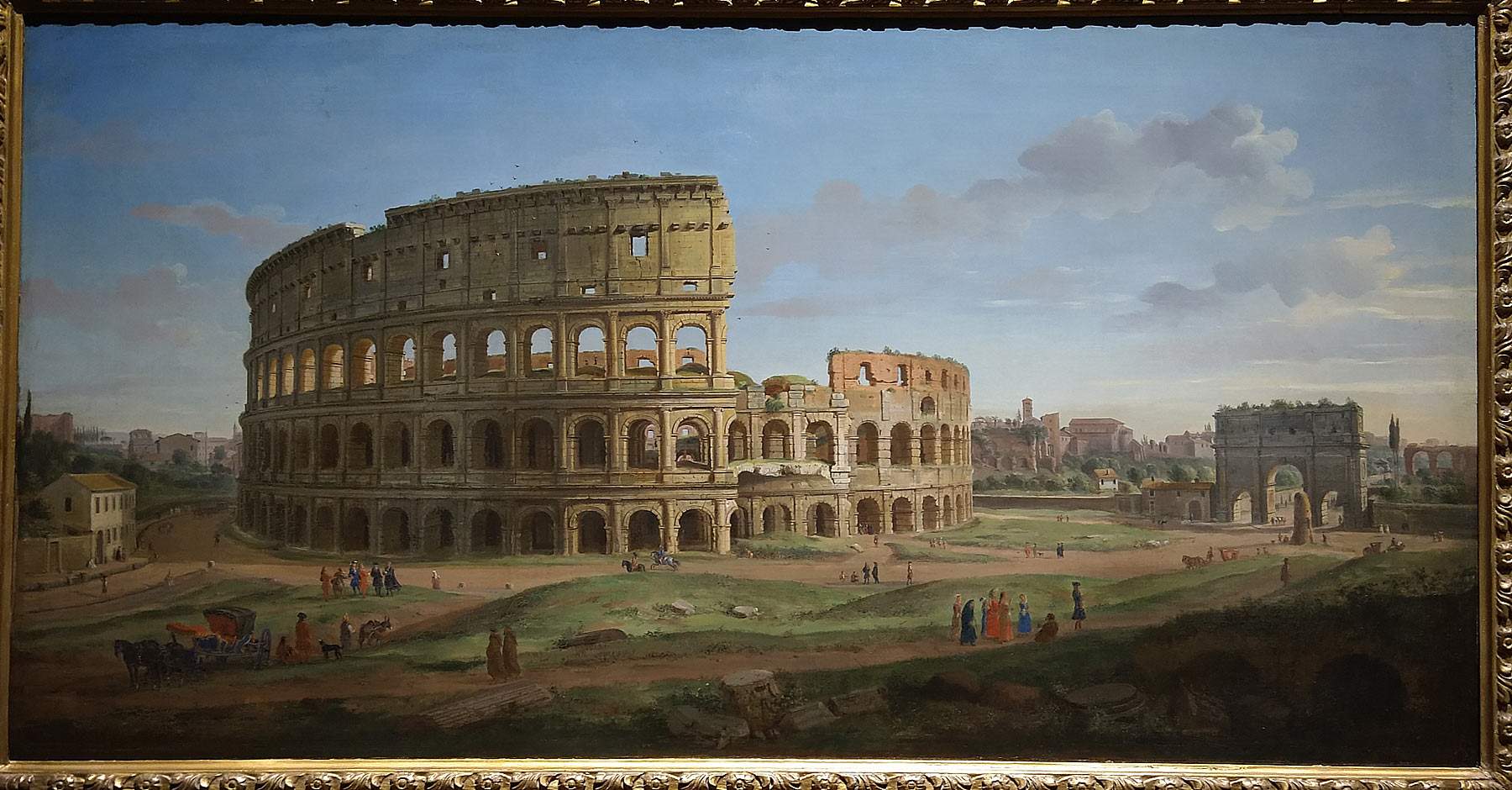

The first artist who can be called a Vedutist was in fact Gaspar van Wittel (Amersfoort, 1653 Rome, 1736), a Dutch painter transplanted to Italy (his name was later Italianized to Gaspare Vanvitelli) who, having arrived in Rome in the 1770s, “invented” the genre of the urban view.
During his career, and especially in the early eighteenth century, van Wittel also produced views of Venice, but they failed to achieve the degree of realism of those of Luca Carlevarijs (Udine, 1663 - Venice, 1730), who was the first artist to offer his views to a foreign audience of passing “tourists,” sensing the fortune the genre would have in the years to follow. Carlevarijs was also able to achieve results of great fidelity to reality through the use of a mechanical instrument known as the camera ottica, a sort of ancestor of today’s camera: it was an instrument whose purpose was, precisely, to return an objective image of what the painter saw, and it is no coincidence that it was widely spread in an era characterized by Enlightenment philosophy. The camera ottica was a kind of box, which could take on various dimensions (in some optical chambers the painter could even go in and sit down) and which, by allowing light to penetrate through a hole, projected the image that the painter wanted to reproduce onto a surface. Then the image, through the use of mirrors, was reflected on the sheet of paper used by the painter. It should be reiterated, however, that the camera ottica provided above all a means for taking notes and not for directly creating the work: in fact, this was born from the reworking, according to the artist’s personal taste and inclination, of what the latter had noted on his own sheets using the camera ottica.
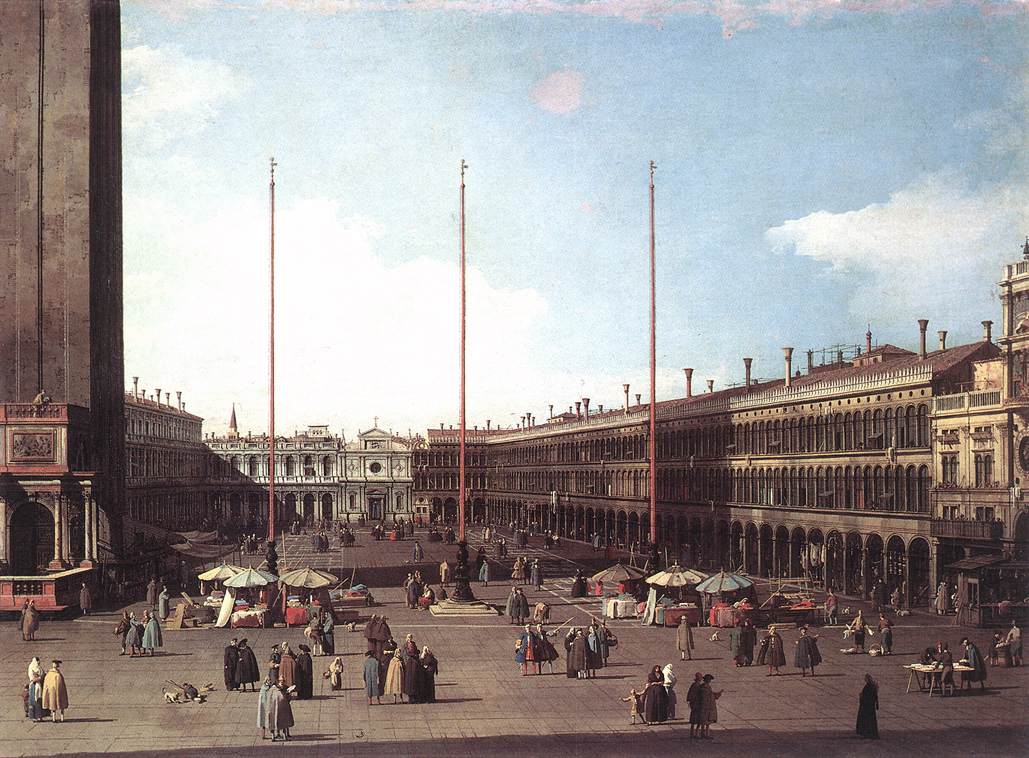
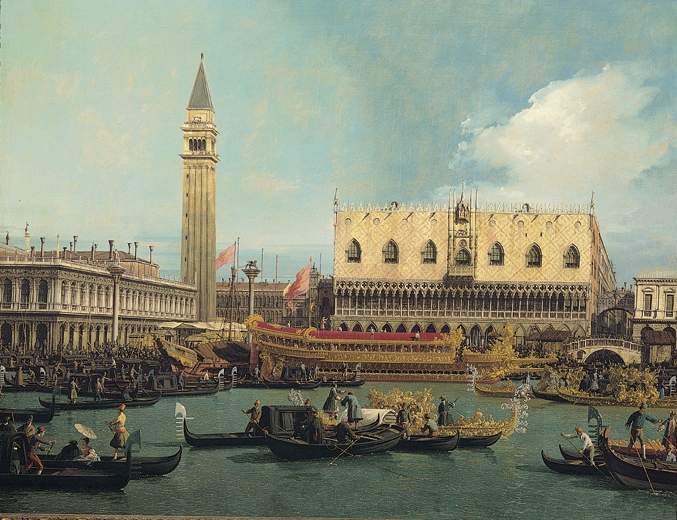
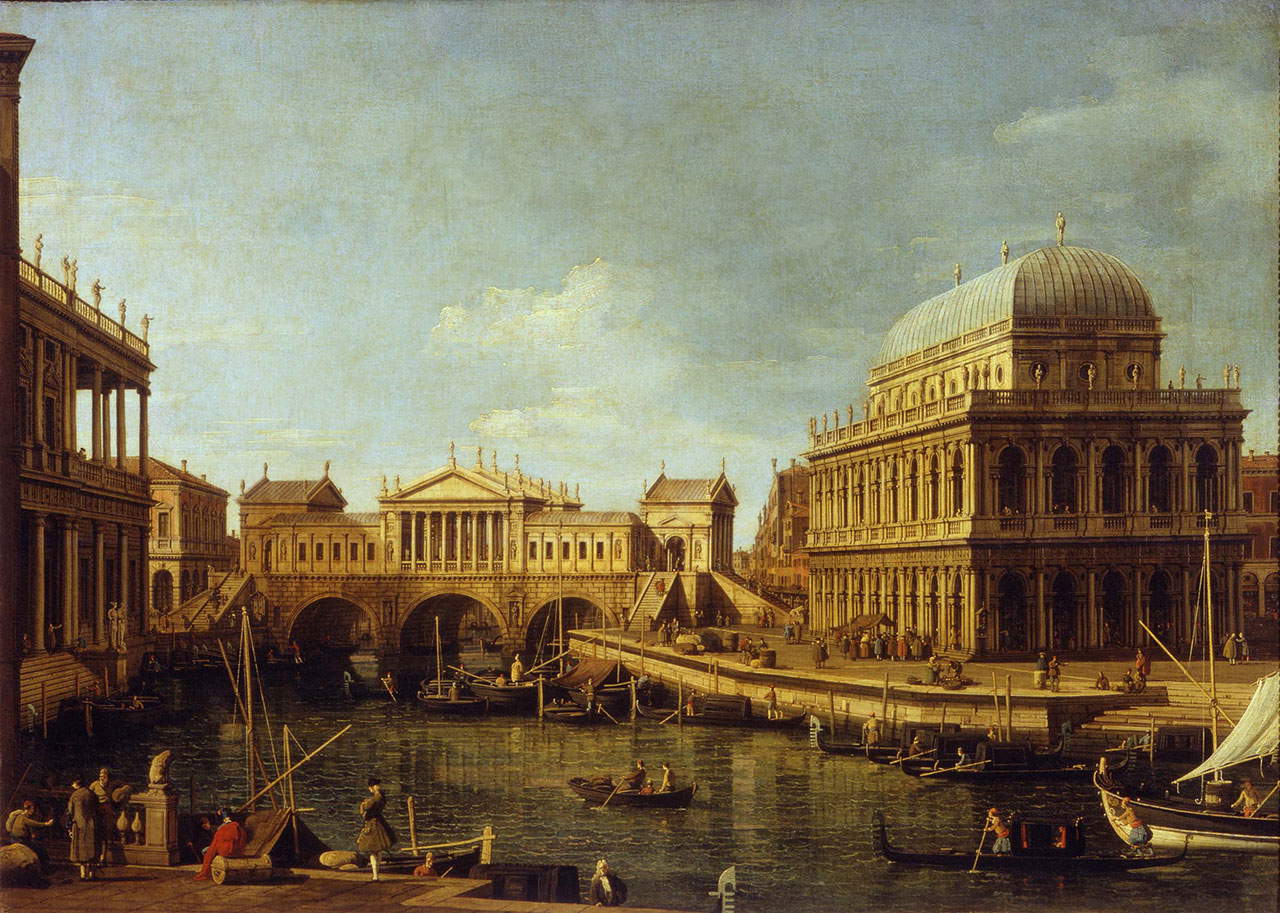
The artist with whom Vedutism reached its international success (so much so that he himself was for a time in England, where he painted views of local towns and countryside) and its highest perfection was Antonio Canal known as Canaletto (Venice, 1697 - 1768). The reason why Canaletto was more successful than Carlevarijs is to be found mainly in his more pronounced sensibility and also in his greater commercial flair. In fact, Canaletto’s views stood out because they were characterized by a delicate and terse luminosity(Piazza San Marco verso San Geminiano, c. 1735, Rome, Galleria Corsini), which made his Venice seem immersed in a perpetual summer, in contrast to Carlevarijs, who did not fail instead to produce views marked by duller and duller colors, painted on cloudy days. Canaletto’s atmospheres, much more airy and above all much more evocative than those of the Friulian painter, were more appreciated by the public. Moreover, Canaletto also had the intuition to create works of small format that could be more easily transported. And again, the Venetian artist was particularly successful in painting scenes of the festivities that took place on the waters of the lagoon(Il Bucintoro al Molo on Ascension Day, c. 1740, Turin, Pinacoteca Giovanni e Marella Agnelli), thus demonstrating his ability to create views with a more spectacular flavor than those of Carlevarijs, while having the same innate ability to render with absolute fidelity what he saw before him.
Another fortunate strand of Canaletto’s production was that of the capriccios: this term is used to indicate those views where elements taken from reality (cities, landscapes, monuments) are mixed with elements of fantasy (often ancient ruins, but also modern elements: famous is the Capriccio Palladiano (c. 1758, Parma, Galleria Nazionale) where Canaletto depicts the Rialto district together with the Palladian Basilica in Vicenza and with a view of the Rialto bridge built, however, according to the project, never realized, by Palladio). This was a way of satisfying his patrons’ taste for the picturesque, a term used at the time to indicate what was free and imaginative, but also a way in which the artist himself could express his own personality and imagination. Although it was not a genre invented by Canaletto: the Venetian painter was nevertheless its most imaginative and original interpreter. But Canaletto’s flair was also expressed in the search for glimpses and corners of Venice that had never been depicted by other Vedutist painters to thus create entirely original views.

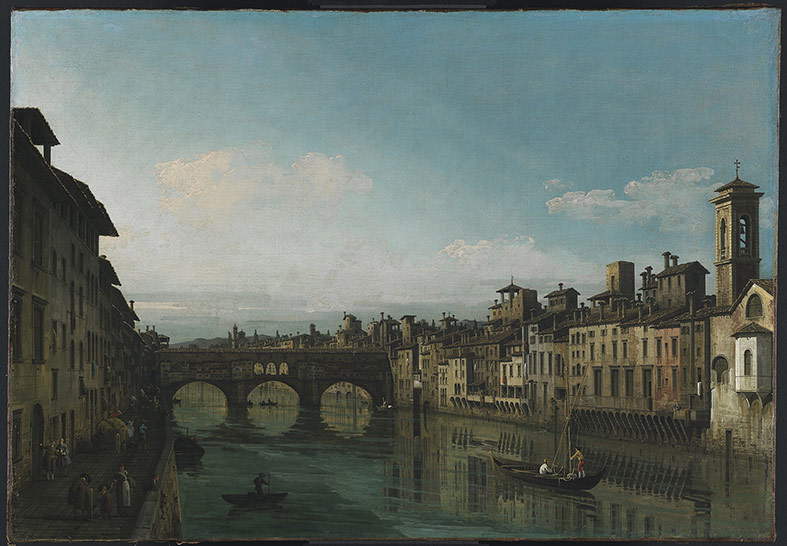
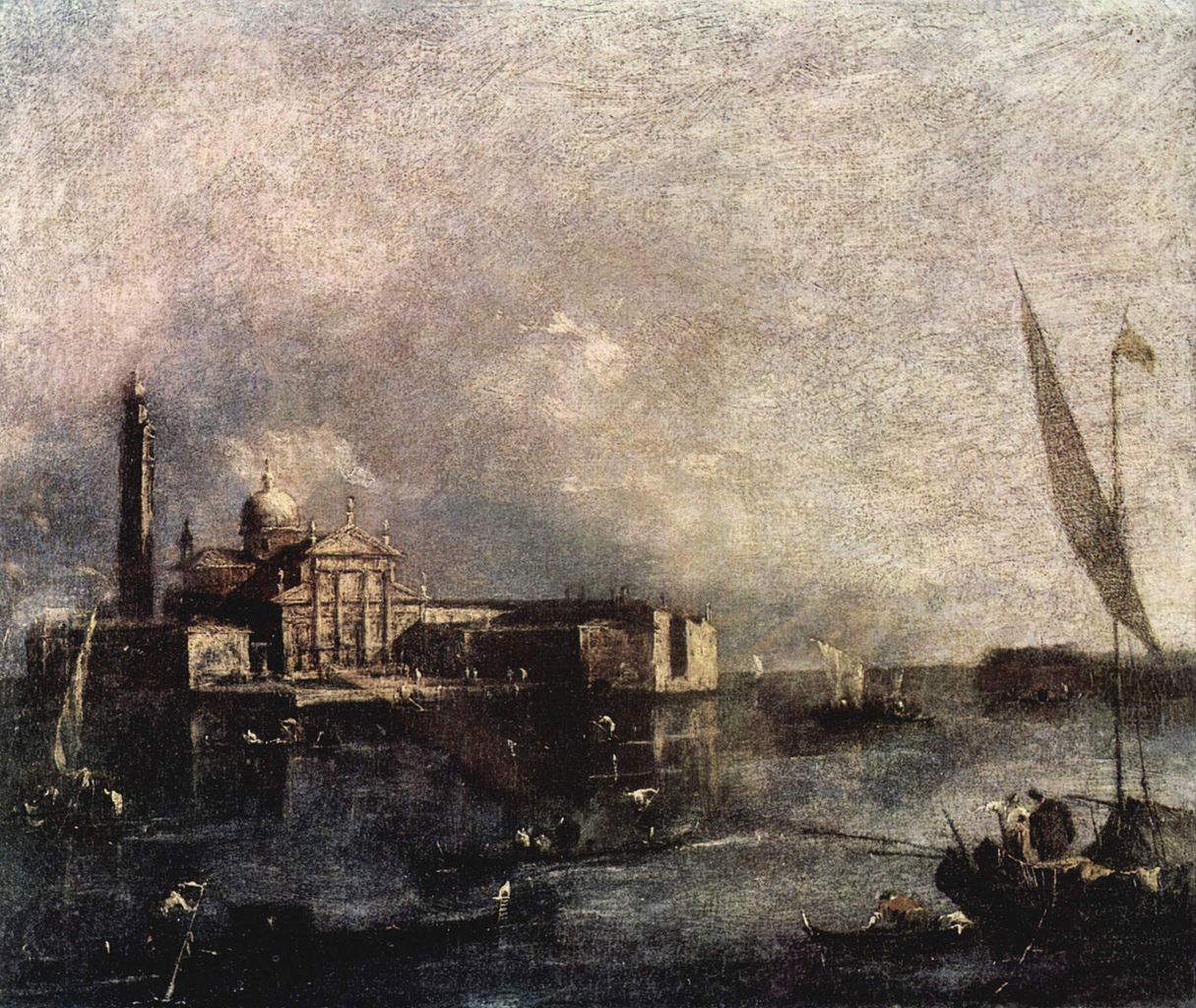
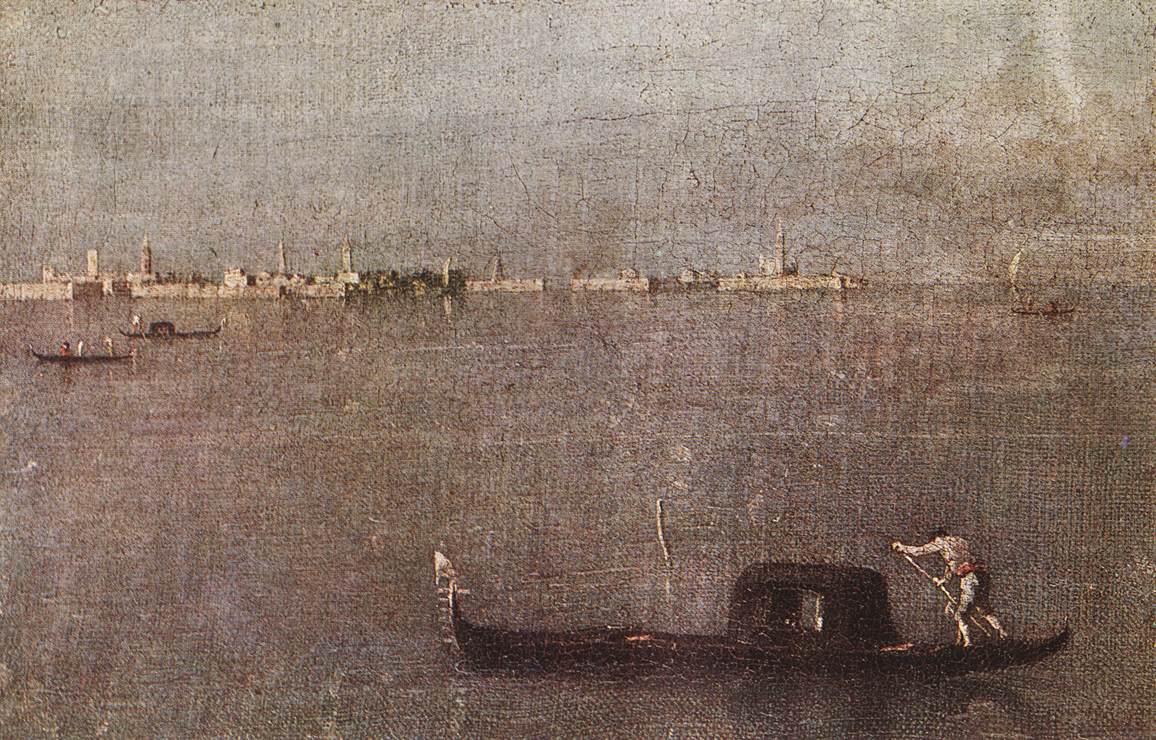
Vedutism saw its last great exponents in Bernardo Bellotto (Venice, 1721 Warsaw, 1780) and Francesco Guardi (Venice, 1712 - 1793). The former was Canaletto ’s nephew (he was the son of a sister), and he distinguished himself for an art that, unlike his uncle’s, proved rather cold, so much so that he found better results, more than in views of Venice, in views of the mainland(Veduta di Dresda, c. 1750, Dresden, Gemäldegalerie), which attracted the interest of patrons from northern Europe to him(read here an in-depth study on Bernardo Bellotto in Tuscany): Bellotto was in fact a court painter in Dresden, Vienna, and Warsaw, the latter city where he would spend the final period of his career and existence.
Very different and unique in the panorama of vedutismo, on the other hand, was the sensibility of Francesco Guardi, a painter who came from a family of Trentino origins and who began by painting traditional works with religious subjects and came late to vedutismo, probably between the 1850s and 1860s. We do not know for sure because the artist’s biography is poorly documented: in fact, the earliest document about him dates from 1750. With Francesco Guardi, the view stops being rendered in an objective and extremely faithful way and instead undergoes the “filter” of the artist’s feeling. Indeed, it must be emphasized that, despite its hegemonic role in culture and the pomp of worldly events, Venice in the eighteenth century was going through a crisis that led to a significant loss of international prestige and economic problems (since it lost much of its trade). All this would result, in 1797, in the loss of its millennial independence. Nevertheless, the city continued its life amid festivals and entertainment.
Francesco Guardi’s soul sensed this decadence, which he restores in his views through atmospheres that lose that terse luminosity typical of Canaletto and become elusive and melancholy. In his works, the outlines of palaces, buildings and figures become less sharp, the air becomes more rarefied and heavy, so much so that one almost seems to perceive the salty air laden lagoon, the figures become distorted, the sea water often joins the sky suggesting a sense of infinity that fuels the anguish of the viewer(Il Bacino di San Marco with the island of San Giorgio Maggiore , circa 1785, Modena, Galleria Estense). Francesco Guardi’s views thus end up evoking feelings of nostalgia and melancholy: a highly original painting, his, which showed how it was possible to express one’s feelings even through a view or a whim, so much so that it anticipated in some ways certain solutions of nineteenth-century Romanticism.
 |
| Vedutism in Venice: origins, development, style of the pictorial genre |
Warning: the translation into English of the original Italian article was created using automatic tools. We undertake to review all articles, but we do not guarantee the total absence of inaccuracies in the translation due to the program. You can find the original by clicking on the ITA button. If you find any mistake,please contact us.